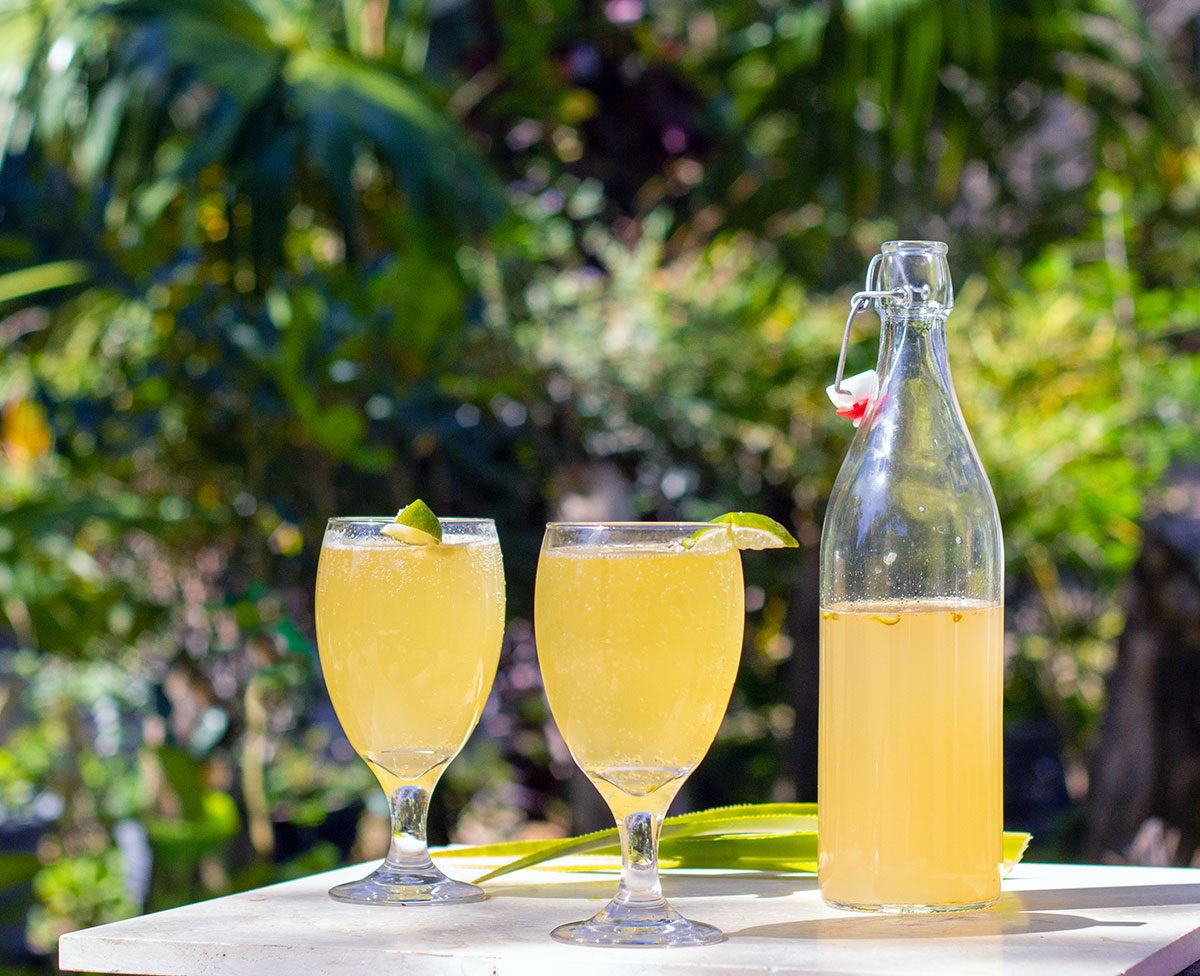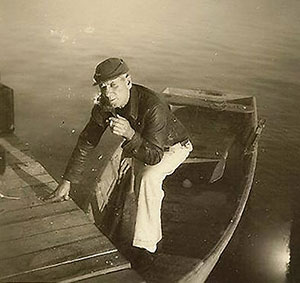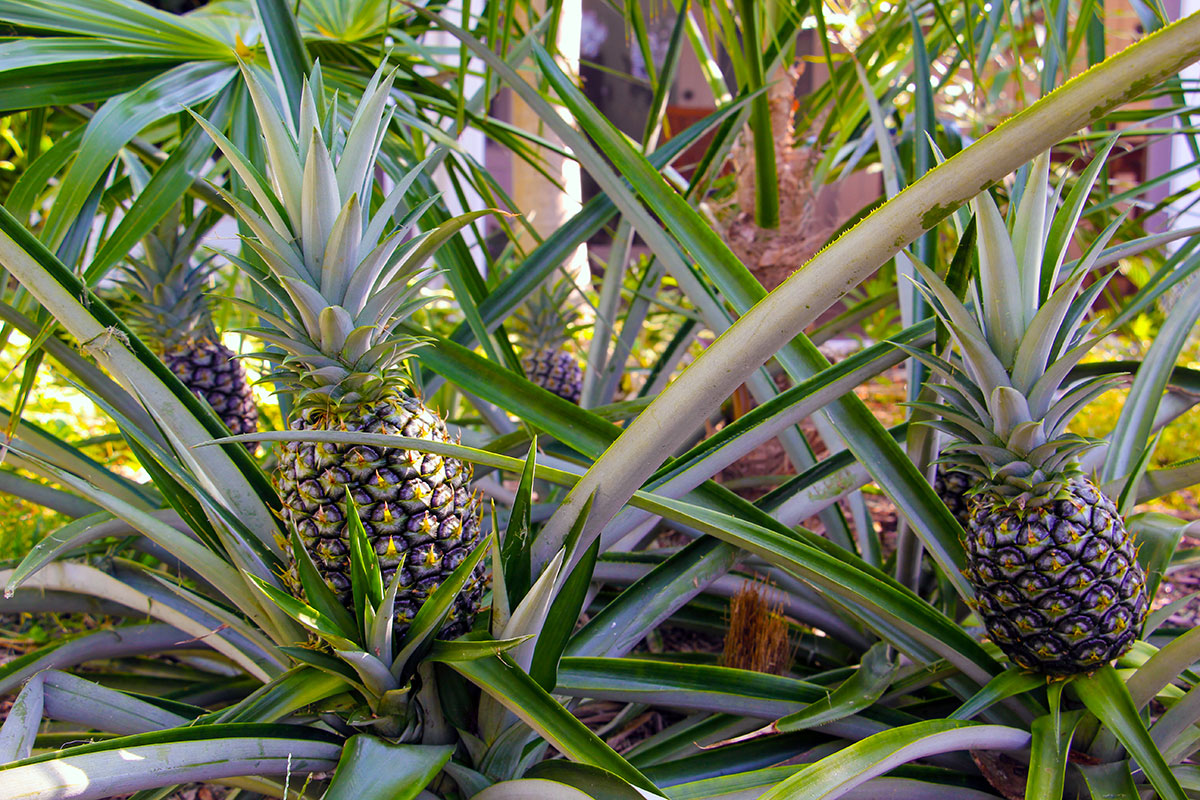Homemade Cheer

When pineapples were farmed along the Florida coast, locals made this homebrew. DANIELLE ROSE PHOTOS
Pineapple peels produce a pleasant fizzy and refreshing beer
In the 1700s, New England ship captains announced their return home by spearing a pineapple on their fence post. It meant visitors were welcome to stop by to hear sea stories and see exotic souvenirs. Real pineapples gave way to architectural details incorporated in homes all along the East Coast to symbolize hospitality.
The fruit also became a status symbol for the wealthy and demand for it skyrocketed. A single pineapple from the Caribbean could fetch hundreds of dollars. Attempts to produce pineapples in New England greenhouses were largely unsuccessful because they couldn’t replicate the minimum two years of constant sunlight and heat needed to produce fruit.
But in 1881, Capt. Thomas E. Richards recognized Florida had all the sunshine necessary to grow this sought-after fruit. He planted the first crop of pineapples along the sandy ridge of the Indian River Lagoon. They thrived in the well-drained soil and abundant sunlight. Other farmers followed suit, planting pineapples all along the Treasure Coast. By the early 1900s, over a million crates of pineapples were shipped each year on the Florida East Coast Railway and the area was named the Pineapple Capital of the World.

Home-brewed pineapple beer was a specialty of Ben Summerlin, a lifelong resident of St. Lucie Village, a community just north of Fort Pierce. SUMMERLIN FAMILY
In 1901, at the peak of this pineapple craze, my great-grandfather, Benjamin Sooy Summerlin, was the 16th child born to Edward Cabell Summerlin and Polly Ann Osteen Summerlin in St. Lucie. He was a champion pole vaulter in high school, and he served in the Navy during World War I. He became a painter by trade and he loved to fish and hunt.
He married my great-grandmother, Sara Clara Boese, in 1927. They raised two children on a homestead in St. Lucie Village. They had a hog pen and chickens, a large plot of vegetables, and the rest of the property was thoughtfully planted with fruit trees and ornamental plants. An old wooden boat under the oak tree was filled with caladiums. By the time I came along, the mulberry, avocado, and citrus trees were large enough for us kids to climb. They also grew a large bed of pineapples on the same sandy ridge as their pineapple farming neighbors.
Like all good homesteaders, they made sure nothing went to waste. Once a pineapple was eaten, the tops were replanted, and only the peels remained. My great-grandfather used those to make what he called pineapple beer. He added the pineapple peels to a jar filled with sugar and water. My Aunt Mary Ann remembers checking it with him each day, waiting for the right amount of bubbles to show it had fermented long enough, anywhere from three days to a week. The longer it sat, the more potent the brew.
Pineapple beer, known as tepache in Mexico, is not a beer in the traditional sense. It’s more like kombucha tea, with a similar low alcohol content, but even more flavorful. It’s fizzy, refreshing, and sweet. I start a batch every time I eat a pineapple. Then I plant the top among all the others on the sandy ridge in my backyard, where they’re thriving, just like they were 140 years ago.
Pineapple Beer Recipe

Slice off the pineapple crown about an inch below its base and plant in a sunny spot for a continual crop.
Ingredients:
Sliced peel from one pineapple
1 cup sugar
6 cups water
Optional: fresh ginger, cinnamon sticks
Directions:
Mix the sugar and water in a wide-mouth, half-gallon mason jar or a glass pitcher. Rinse the peels and add them to the jar. Add ginger or cinnamon sticks, if using. Cover the top with a cloth or paper towel secured with a rubber band. Allow it to sit at room temperature for three-seven days. You’ll know it’s ready when you see small bubbles rising to the surface and some sticking to the side of the glass. Give it a taste test. When it’s ready it will be fizzy and sweet. The longer it sits, the more potent the brew. Strain into jars or bottles and refrigerate.
Serve ice cold.

Danielle Rose
Danielle Rose is a seventh-generation Florida gardener and fisherwoman and descendant of the prodigious Summerlin family. A graduate of the University of Florida, she loves gathering friends and family around the table for homegrown food.




